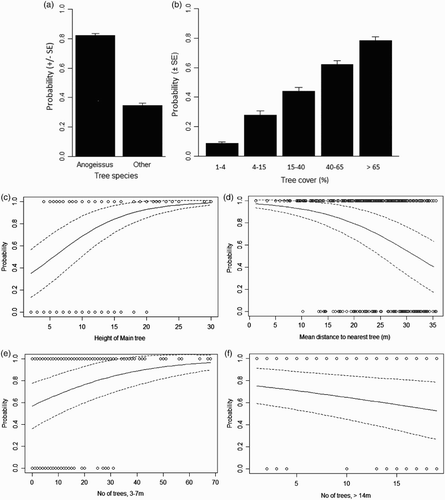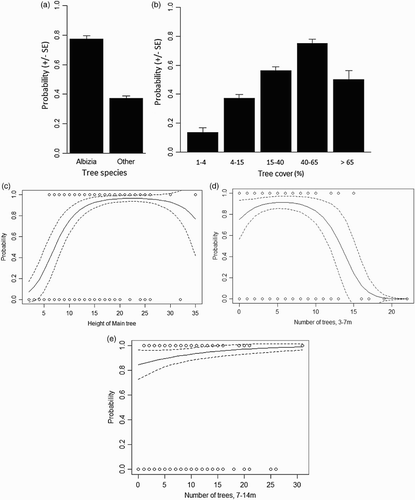Figures & data
Table 1. Mean number of fixes and the days over which birds were tracked at Koubri in Burkina Faso and Pepease in Ghana, with mean size of home range, measured as the 50% and 90% kernel density, and the MCP100.
Table 2. Variables recorded at actual bird locations and control points. All measurements taken within a 25 m radius of the Main tree.
Figure 1. Significant predictors of the probability of occurrrence of Wood Warblers at Koubri in Burkina faso (regression lines from the best model in with mean values for other variables, ‘treesp’ = Anogeissus and ‘treecov’ = 3): (a) tree cover, (b) tree species, (c) height of the Main tree (in which bird was located or at centre of the control point – see methods), (d) average distance to the Main tree of the five nearest trees (i.e. inverse of tree density), and the number of trees within 25 m radius of height, (e) 3–7 m and (f) >14 m.

Table 3. Results of the logistic regression analysis to determine which habitat variables predicted the habitat use by Wood Warblers at a wintering site at Koubri Monastery in Burkina Faso. The first, full model results are given along with the best model (of all possible models) evaluated with AIC, along with the model-averaged parameter estimates from the top models (the six models within 4 AIC points of the top model). Note that Treesp ‘Anogeissus’ and Treecov ‘2’ are the reference categories.
Figure 2. Significant predictors of the probability of occurrrence of Wood Warblers at Pepease in Ghana (regression lines from the best model in with mean values for other variables, ‘treesp’ = Albizia and ‘treecov’ = 3): (a) tree cover, (b) tree species, (c) Main tree height, and the number of trees of height, (d) 3–7 m and (e) 7–14 m.

